Walking past the new book shelf this week, I found a book I really like.

In V&I, I often have talked about the history of design, the history of cloth, the history of fashion, and how closely important they are to the cultures within which they exist. This book gives a rough history of world art (yes, including non-western cultures and their design motifs!) though the idea of pattern. Pattern as in “the rhythmic and applied decoration on a surface”.
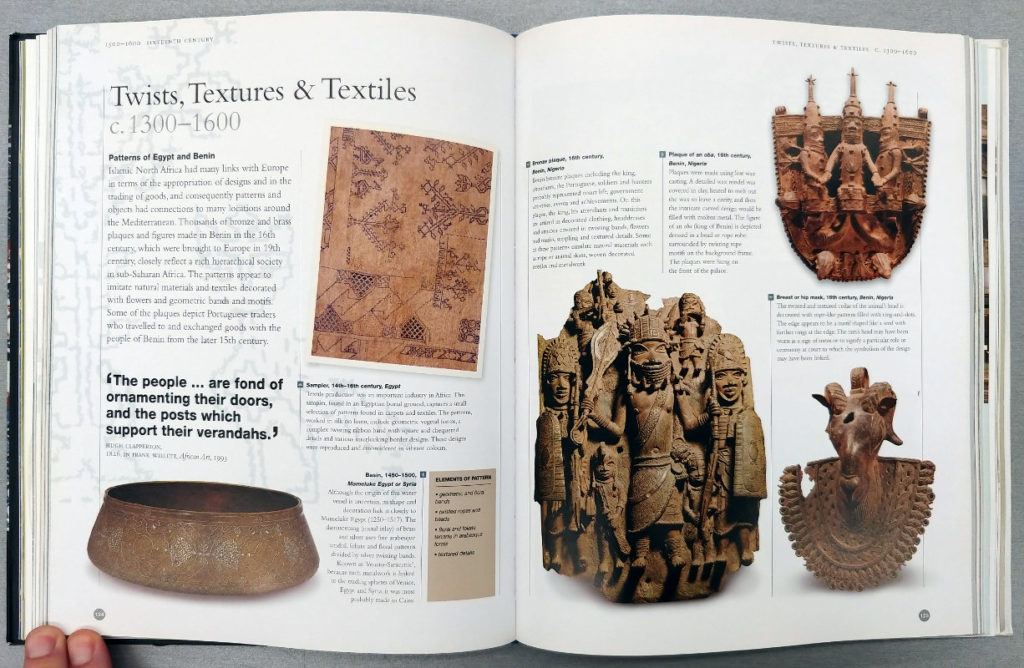
The history of world design is more usually presented in terms of types of objects. For example, for ancient China, some centuries the only remains are a series of bronze vessels. For 18th century France, inlaid and extra-ornamented furniture is usually the central discussion topic. The textile trade between Europe and India is frequently discussed in terms of painted textiles called palimpores. Traditional conoisseurship most often catalogs items by stylistic changes over time, often valuing most the rarest remaining objects.
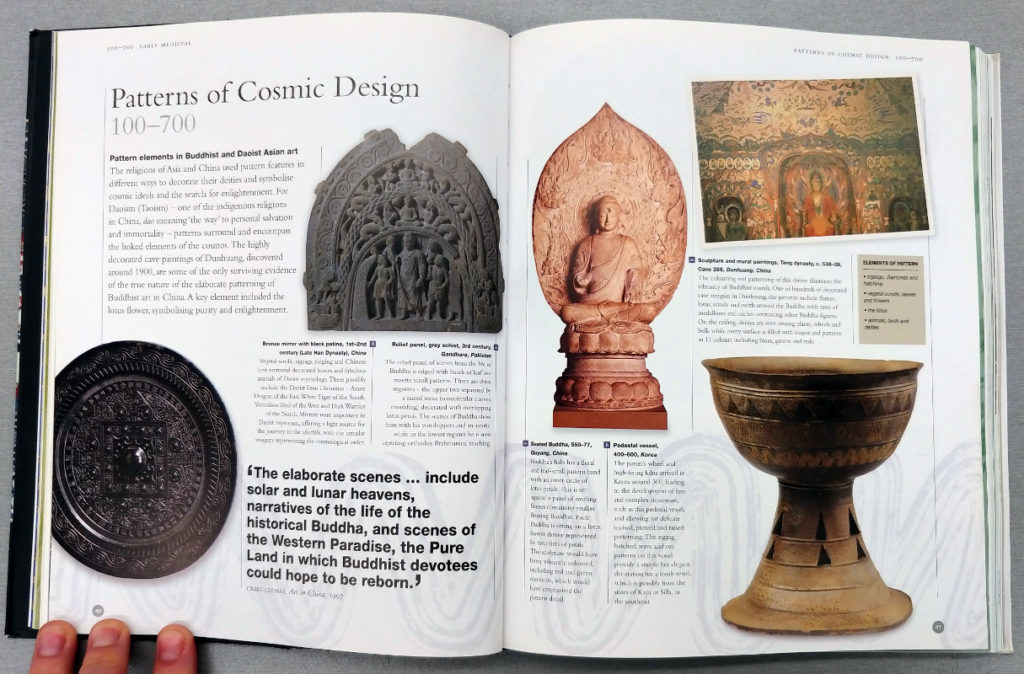
But this book is different. It tackles the history of human design by grouping a variety of objects by their dominant design motifs. This is a great idea for teaching the world history of art, especially to visual learners like FIT students. Also, focusing on the concepts to illustrate conveys a sense of what felt most important to those cultures. It’s awesome and I love it!
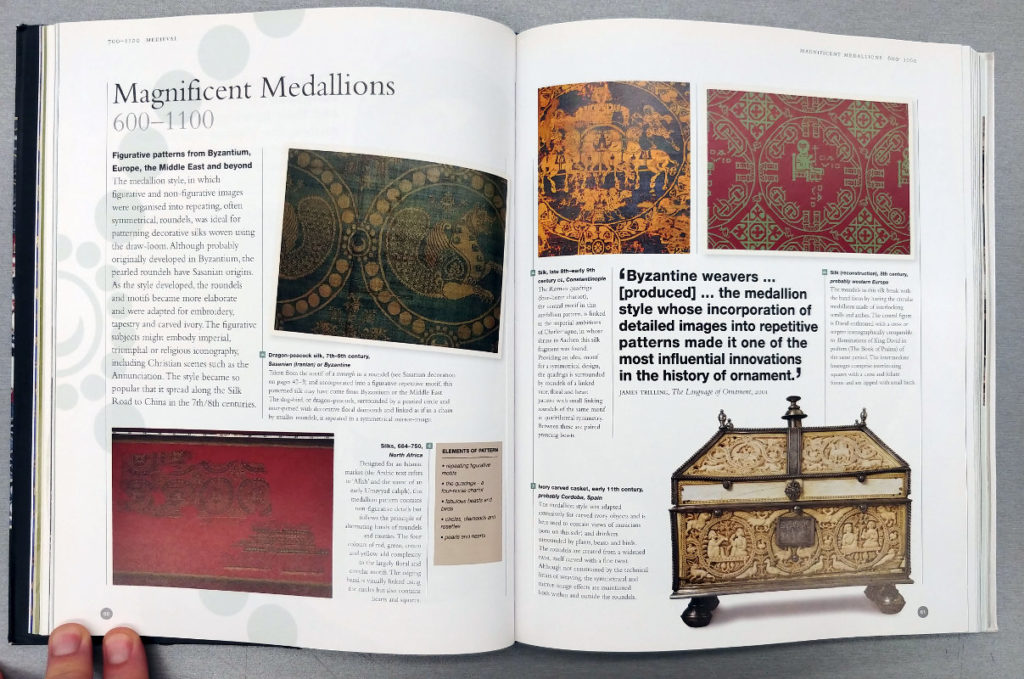
The book takes scholarly summaries concerning cultures and their objects, then combines it with glorious full color images of these objects. Even here, the definition of what constitutes objects worthy of study is so expanded from older books of ornament, that my heart rejoiced. The team who put this book together clearly attempted to break down the 19th century division between Fine Arts (sculpture, architecture, and painting) and Decorative Arts (everything else, but not really counting textiles and definitely excluding fashion as the most frivolous idea possible.) Objects in these gorgeously laid out pages include many textiles, including patterned silks, multicolored tapestries, rich carpets, and elaborate embroideries from many cultures. Even the rise of French couture gets a page.
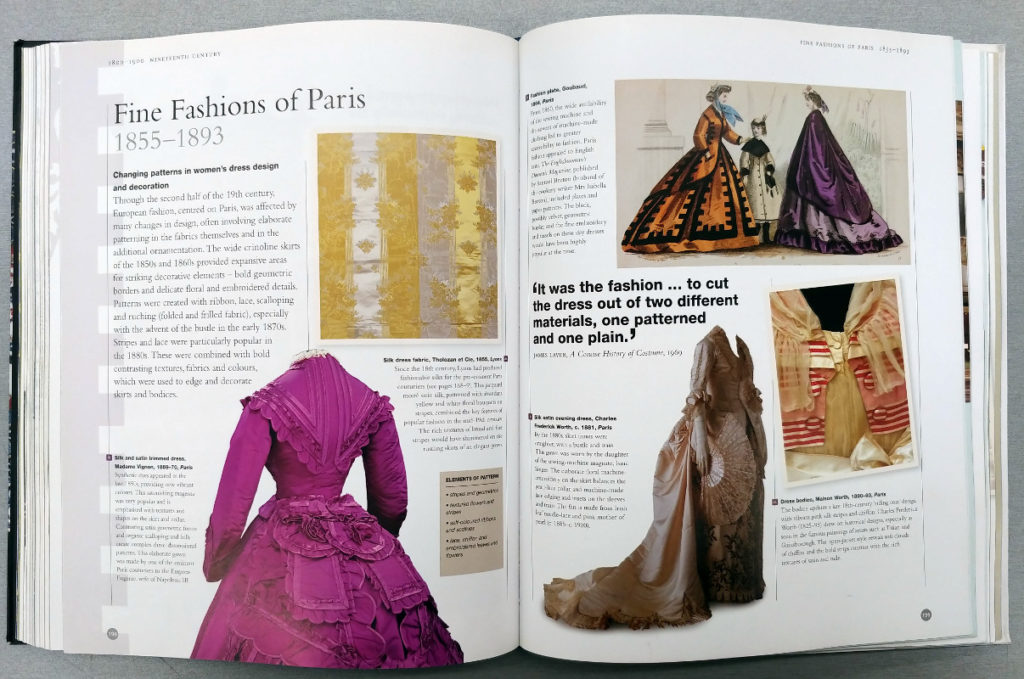
The end of the book includes a comprehensive, worldwide timeline, giving contemporary contexts for those familiar with some cultures, but not others. There is also a glossary, focused mainly on the grammar and motifs of art history. Most importantly, there is a bibliography which offers the interested reader places to research further.
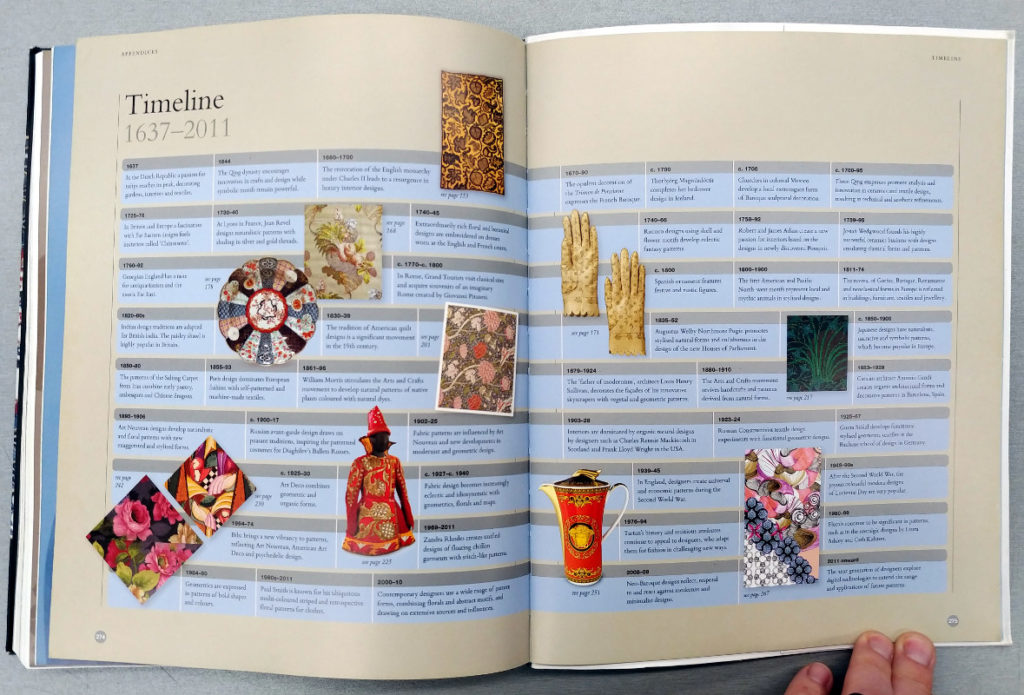
Given the sources of many old art friends pictured, this looks like it must have been a joint effort across departments at the Victoria & Albert museum in London, UK. It is an heroic one which will likely be used as the textbook for the next generation of culture and art history teachers. Flipping through it is like getting the best kind of museum tour.
Comments
2 responses to “The world in pattern”
What a way of expressing yourself! I must admit that you have a great passion & writing style with you. All of your posts are wonderful.
Thank you! I’m sorry that we’re just about to put fewer posts out for the coming summer time.